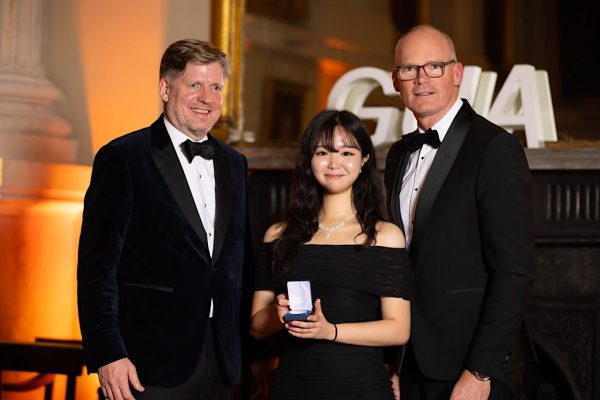Graduate students developed biological robots that can be controlled by light
Apr 10, 2016
Last updated on Aug. 28, 2016 at 03:38 p.m.
Graduate students at the University have developed biological machines that can be controlled simply by using light.
The body of the six to eighteen millimeter robot is made from skeletal muscle, protein and a biocompatible polymer. The bio bot contracts and relaxes, allowing the robot to move.
“A lot of our ideas for the design come from bio-inspiration,” said graduate student Ritu Raman, the first author of the paper. “Our bio bots — the way they walk is very similar to the way an inchworm walks and that was done deliberately because it’s an easy form of walking to imitate.”
In order to move, however, the bots require some type of stimulus. Caroline Cvetkovic, a graduate student, said they initially used electrical signals to stimulate the bots, but it became harmful to the muscle tissue over time.
Get The Daily Illini in your inbox!
“The first thing we did was use electrical signals, so basically sending an electric field or zapping the cells and getting them all to contract at one time,” Cvetkovic said. “But, if you do that a lot, just like, if you could imagine, electrocuting someone, over time it becomes harmful to the cells … and they gradually weaken.”
So, the team of engineers turned to a non-invasive form of stimulus: flashes of LED light.
“If we can use something like light, that’s really non-invasive,” Cvetkovic said. “And it’s great because you can apply the light at a certain distance away so you don’t have to touch the cells and you’re not introducing anything that’s really harmful to them over time.”
“We basically used genetic engineering [and] genetic modification to put a different kind of channel in the membrane,” Raman said. “So, they have these light-gated ion channels rather than voltage-gated.”
The skeletal muscle bot is actually the second version of the biological robot. Initially, cardiac muscle was used instead of skeletal muscle. However, cardiac muscle contracts on its own, so it was not possible to control it like skeletal muscle.
“In the first generation, we used cardiac cells … and these were really great for the first device we designed because heart cells will contract or beat spontaneously,” Cvetkovic said. “But that didn’t allow us to have any way of actually controlling the muscle.”
“Skeletal muscle is really good for that because, in the body, muscle only contracts when neurons fire, so you can very directly control [that],” Raman said.
Raman said the robots are also being worked on by dozens of people outside of the University who are all a part of an NSF center involving multiple universities. Each team works on a different aspect of the bots, with the University of Illinois team working on the actual building of the bots.
“This project and this lab is part of an NSF center between MIT, Illinois and Georgia Tech,” Raman said. “So there’s dozens of different people working on things kind of related to bio bots at different stages of bio bots.”
Sarah Frier, sophomore in Engineering, said while she hadn’t heard of these biological machines before, she thinks they are an “amazing” idea.
“I think that’s amazing, I think it’s really exciting that something that sounds so advanced and almost, like, futuristic, came out of our graduates,” she said.
Raman said that they are also very aware of the ethical implications of their work.
“People start thinking, oh you’re making these biological machines, are they alive, are they living, are you considering the ethics of building something that could potentially have some sort of agency?” Raman said. “We like to say, currently we are very far from anything that you would consider a living, or really any kind of machine.”
Cvetkovic said they are still not sure what they might use the bio bots for in the future.
“So if you think about that as, these kind of biological legos … so if we had building blocks of different biological materials and then man-made materials, how do we arrange them in different ways to get machines that can do different things.” Cvetkovic said.
Raman said they are currently focusing more on the fundamentals of the bots and understanding the basics of how they work.
“What we’re really trying to do as a lab is and with this project is to establish very fundamental scientific principles of building with biology,” Raman said.
“We are still far out from a more therapeutic or clinical application,” Cvetkovic said. “But we like to think about [the bots] in terms of developing different systems and platforms that can then be developed further down the line.”
Raman said their lab has been primarily health-focused. Cvetkovic said they have worked on some medical applications, such as a glucose sensor.
“I think there are a lot of future applications for this type of technology, primarily in health but also in other types of environmental or security things based on the kind of cells that you use,” Raman said.





